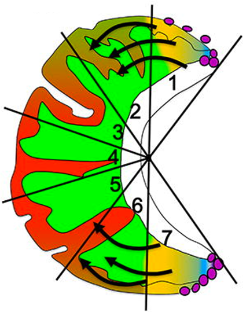Abstract
The identity of individual neuronal cell types is defined by the expression of specific combinations of transcriptional regulators that control cell type–specific genetic programs. The epithelium of the vomeronasal organ of mice contains two major types of vomeronasal sensory neurons (VSNs): 1) the apical VSNs which express vomeronasal 1 receptors (V1r) and the G-protein subunit Gαi2 and; 2) the basal VSNs which express vomeronasal 2 receptors (V2r) and the G-protein subunit Gαo. Both cell types originate from a common pool of progenitors and eventually acquire apical or basal identity through largely unknown mechanisms. The transcription factor AP-2ε, encoded by the Tfap2e gene, plays a role in controlling the development of GABAergic interneurons in the main and accessory olfactory bulb (AOB), moreover AP-2ε has been previously described to be expressed in the VSNs. Here we show that AP-2ε is expressed in postmitotic VSNs after they commit to the basal differentiation program. Loss of AP-2ε function resulted in reduced number of basal VSNs and in an increased number of neurons expressing markers of the apical lineage. Our work suggests that AP-2ε, which is expressed in late phases of differentiation, is not needed to initiate the apical-basal differentiation dichotomy but for maintaining the basal VSNs’ identity by preventing the expression of apical genes. Moreover, our data suggest that differentiated VSNs of mice retain a notable level of plasticity.
